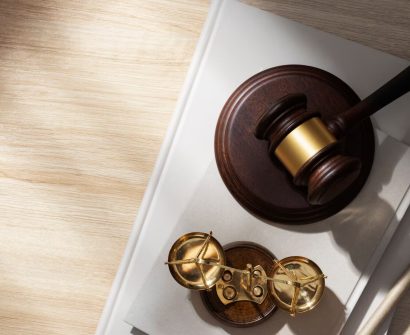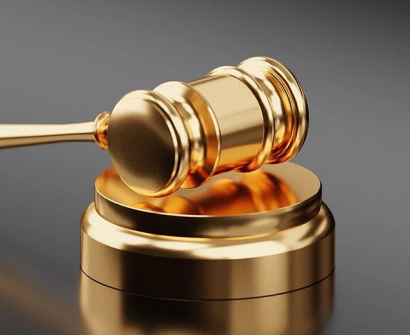
India’s Constitution is the ultimate law of the land. The document lays out the fundamental rights, guiding principles, and responsibilities of citizens as well as the framework that distinguishes the fundamental code, structure, procedure, powers, and duties of government institutions.
Rather than conferring parliamentary supremacy, it confers constitutional supremacy. Due to the Indian constitution’s flexibility, which allows for amendment, its authors included Article 368, which grants the Parliament the authority to change any provision in order to better meet the needs of the nation’s evolving society. However, certain restrictions on the Parliament’s ability to amend the Constitution have been placed in front of them because, if granted total authority, the parliament may abuse that power.
shankari prasad vs union of india case summary
Facts of the Case:
- Theshankari prasad vs union of india citation isAIR 1951 SC 458
- In order to abolish the zamindari framework that was widely used throughout India, a few state councils established the Zamindari Abolition Act in order to implement specific agrarian reforms, especially in Madhya Pradesh, Uttar Pradesh, and Bihar.
- Such an enactment required the distribution of enormous land holdings owned by wealthy zamindars among the populace. Feeling upset, some Zamindars challenged the demonstration in court, arguing that it was unlawful and infringed upon their fundamental rights, such as the right to property guaranteed to them by Part III of the Constitution.
- While the high courts in Allahabad, Uttar Pradesh, and Nagpur, Madhya Pradesh, upheld the validity of the state-passed legislation, the Patna high court ruled that the Act passed in Bihar was illegal.
- Progress resulting from the decisions and appeals recorded by various zamindars in these tribunals was soon to come. In the middle of it, a bill to amend the Constitution was presented by the Union Parliament in an attempt to end all lawsuits.
- After undergoing several modifications, the Bill was ultimately approved by the required majority and became the Constitution (First Amendment) Act of 1951.
- The Amendment Act was sufficient in that it limited the fundamental right to property and approved the Zamindari Abolition Laws.
- It was necessary to recall New Articles 31A and 31B in order for the Constitution to sanction the criticized actions.
- In response, the zamindars filed the current petitions under Article 32 of the Constitution, requesting a writ under the Supreme Court’s scrutiny to test the Amendment Act and declare it invalid and unlawful.
Issues Raised in the Case:
- Is the First Amendment Act that was ratified by Congress unconstitutional?
- Does the Parliament have the power to change the Fundamental Rights?
- Does the term “law” in Article 13(2) refer to the laws contained in the Constitution?
Contentions Raised by the Appellant:
- The legal counsel contended that, as the designated body, only the two houses of Parliament have the power to amend the constitution. Consequently, the temporary Parliament lacked the legal authority to wield this power.
- In addition, the attorney argued that Article 368 is a self-contained clause that prohibits bill amendments after they are introduced in the House. It is acknowledged that the bill in question underwent numerous amendments during its passage, so it cannot be said to have been passed in accordance with Article 368’s guidelines.
- Last but not least, the attorneys claimed that land-related issues are covered by List 2 of the seventh schedule, which is the State Legislature’s domain. As such, the Parliament did not have the authority to pass laws concerning land.
Contentions Raised by the Respondents:
- If the petitioner’s claim, that Article 368’s mention of the two houses renders it irrelevant to the interim parliament, is accepted, it could negate the very intent behind Article 379.
- They declared that the word “law” in Article 13(2) refers only to customary law and excludes amendments to the constitution. It is made abundantly clear by highlighting the differences between the laws that Article 13(2) does not apply to the amendment made under Article 368.
Judgment of the Case:
- The shankari prasad vs union of india year in which it was decided isOctober 5, 1951.
- The judges who decided the case were Chief Justice J. Hiralal Kania, Justice M. Patanjali Sastri, Justice B.K. Mukherjee, Justice Sudhi Ranjan Das, Justice N. Chandrasekhara Aiyar
- The Supreme Court maintained the First Amendment Act’s legality after taking into account all the relevant facts and circumstances. It decided that ordinary laws are the only ones included in Article 13(2)’s definition of “law,” excluding constituent laws.
- The honourable court determined that Article 13(2) has no bearing on the amendment made in accordance with Article 368. The court ruled that the ability to change fundamental rights is part of the amending authority granted by Article 368.
- Accordingly, under Article 13(2) of the Constitution, any amendment that restricts fundamental rights will not be deemed invalid.
After being contested on multiple occasions, the Golaknath Case ultimately resulted in the judgment being overturned. Parliament can change any provision of the Constitution, but it is not allowed to change the fundamental framework of the document, according to the Doctrine of Basic Structure. It increased the scope of Article 13 as well as Article 368’s constitutional protections. It is clear from this that the Sankari Prasad Singh Deo v UOI case was significant in both the development of the basic structure theory and the interpretation of the Indian Constitution, both of which contribute to its preservation.
For any latest news, case laws, judiciary exams notifications, patterns, etc watch Jyoti Judiciary’s YouTube channel for legal videos for any updates at https://youtube.com/@jyotijudiciarycoaching4852?si=2cwubh9d2A9urwJf










